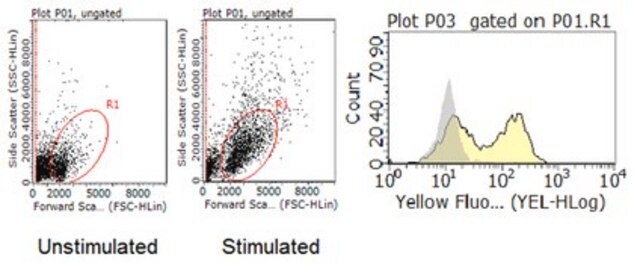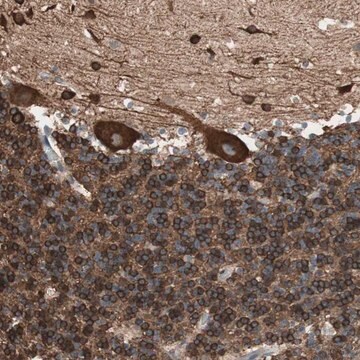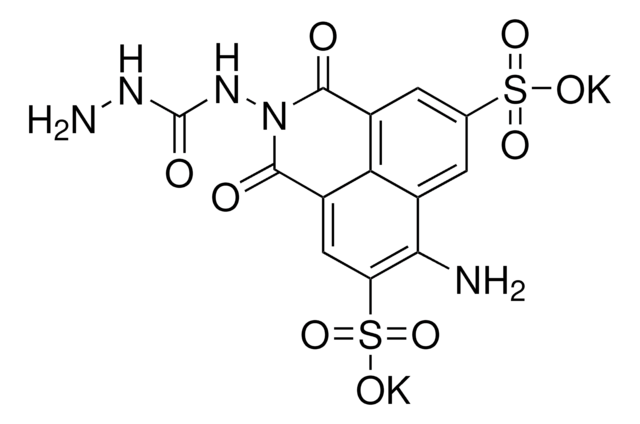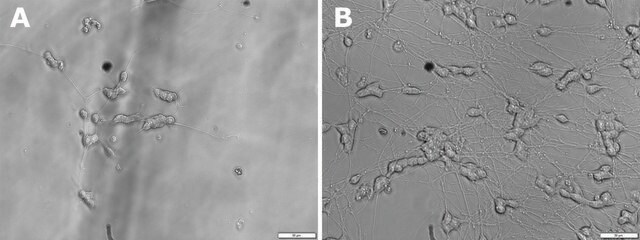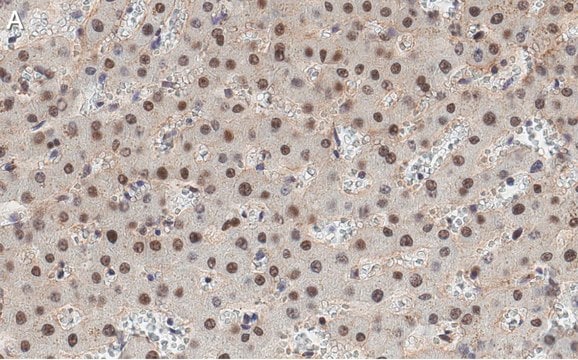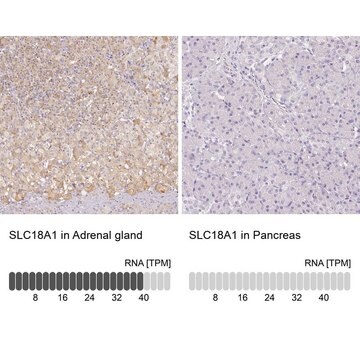SRP8040
LAG-3 (human): FC (human)
recombinant, expressed in CHO cells, >99% (SDS-PAGE)
Synonim(y):
FDC Protein, Lymphocyte activation gene-3, PC cell-derived growth factor
Zaloguj sięWyświetlanie cen organizacyjnych i kontraktowych
About This Item
Kod UNSPSC:
12352200
NACRES:
NA.32
Polecane produkty
pochodzenie biologiczne
human
rekombinowane
expressed in CHO cells
Próba
>99% (SDS-PAGE)
Formularz
liquid
masa cząsteczkowa
~80 kDa by SDS-PAGE
opakowanie
pkg of 50 μg
stężenie
≥0.2 mg/mL
zanieczyszczenia
<0.1 EU/μg endotoxin, tested
kolor
clear
numer dostępu UniProt
Warunki transportu
wet ice
temp. przechowywania
−20°C
informacje o genach
human ... LAG3(3902)
Opis ogólny
LAG3 (lymphocyte activation gene 3) is an inhibitory CD4 (cluster of differentiation)-related molecule, and is expressed by activated CD4+ and CD8+ T cells.
Działania biochem./fizjol.
LAG3 (lymphocyte activation gene 3) is a negative regulator of T-cell proliferation where it suppresses T-cell receptor (TCR)-mediated calcium fluxes and modulates the memory T-cell pool size. It is a CD4 (cluster of differentiation) homolog that functions as a ligand for MHC (major histocompatibility complex) II. Membrane expression of LAG3 modulates the suppressive function of Tregs (T-regulatory) both in vivo and in vitro. HIV-1 (human immunodeficiency virus) infection results in significant increase in LAG3 peripheral blood and lymph node expression, which is exhibited on both CD4+ and CD8+ T cells, and this is linked with disease progression. In melanoma, this protein is responsible for TLR (Toll-like receptor)-independent activation of plasmacytoid dendritic cells (pDCs) at tumor sites, which is partially implicated in driving an immune-suppressive environment.
Postać fizyczna
Solution in PBS.
Inne uwagi
The sequence coding for the 4 extracellular Ig-like domains of human LAG-3 (D1-D4) is fused to the Fc portion of human IgG1.
Ta strona może zawierać tekst przetłumaczony maszynowo.
Kod klasy składowania
12 - Non Combustible Liquids
Klasa zagrożenia wodnego (WGK)
WGK 1
Temperatura zapłonu (°F)
Not applicable
Temperatura zapłonu (°C)
Not applicable
Wybierz jedną z najnowszych wersji:
Masz już ten produkt?
Dokumenty związane z niedawno zakupionymi produktami zostały zamieszczone w Bibliotece dokumentów.
Tumor-infiltrating NY-ESO-1-specific CD8+ T cells are negatively regulated by LAG-3 and PD-1 in human ovarian cancer.
Matsuzaki J et al
Proceedings of the National Academy of Sciences of the USA, 107(17), 7875-7880 (2010)
Ching-Tai Huang et al.
Immunity, 21(4), 503-513 (2004-10-16)
Regulatory T cells (Tregs) limit autoimmunity but also attenuate the magnitude of antipathogen and antitumor immunity. Understanding the mechanism of Treg function and therapeutic manipulation of Tregs in vivo requires identification of Treg-selective receptors. A comparative analysis of gene expression
Chiara Camisaschi et al.
The Journal of investigative dermatology, 134(7), 1893-1902 (2014-01-21)
Plasmacytoid dendritic cells (pDCs) at tumor sites are often tolerogenic. Although pDCs initiate innate and adaptive immunity upon Toll-like receptor (TLR) triggering by pathogens, TLR-independent signals may be responsible for pDC activation and immune suppression in the tumor inflammatory environment.
Xiaoling Tian et al.
Journal of immunology (Baltimore, Md. : 1950), 194(8), 3873-3882 (2015-03-18)
T cells develop functional defects during HIV-1 infection, partially due to the upregulation of inhibitory receptors such as programmed death-1 (PD-1) and CTLA-4. However, the role of lymphocyte activation gene-3 (LAG-3; CD223), also known as an inhibitory receptor, in HIV
Nasz zespół naukowców ma doświadczenie we wszystkich obszarach badań, w tym w naukach przyrodniczych, materiałoznawstwie, syntezie chemicznej, chromatografii, analityce i wielu innych dziedzinach.
Skontaktuj się z zespołem ds. pomocy technicznej